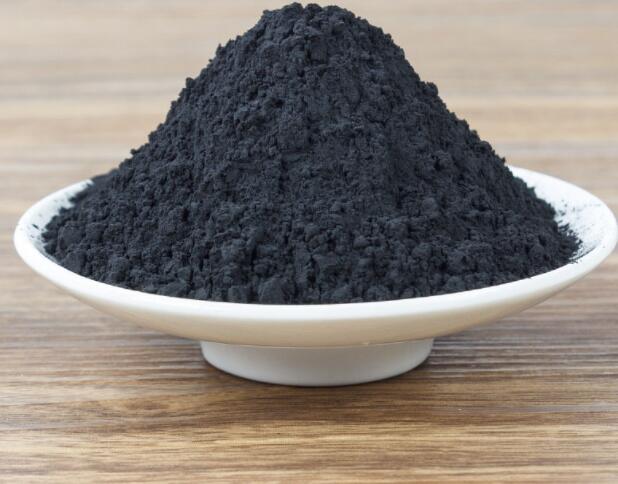In the field of coating production, the phenomenon of (semi)finished product agglomeration, also known as re-agglomeration, is frequently encountered. This problem is particularly severe in the production of colored paints when dealing with carbon black pigments. This article aims to present a simple and cost-effective grinding and dispersion process for carbon black, leading to improved stability during storage and prevention of re-agglomeration.
Agglomeration MechanismTo overcome the agglomeration of carbon black during the production and storage of coatings, it's essential to understand the mechanism behind this phenomenon. Dispersion of carbon black is challenging due to its strong particle aggregation and high oil absorption capacity. Additionally, carbon black, especially oxidized carbon black, possesses a large surface area, making it prone to adsorbing moisture from the surrounding environment.

According to agglomeration theory, the forces that act when pigment particles come close to each other typically include electromagnetic forces, electrostatic forces, and steric hindrance forces. Electromagnetic forces include van der Waals forces, one of which results from the influence of dipoles within interacting particles. It has been observed that the van der Waals forces between similar particles decrease with particle size and particle separation distance. Hence, when dispersing carbon black, achieving a certain fineness is a fundamental requirement. In general, this fineness should be ≤15 µm, with even stricter requirements ≤5 µm. Electrostatic forces between pigment particles depend on the thickness of the electric double layer formed around the particles. A reduced double layer thickness can lead to decreased stability of particle dispersion. In a dispersion system, when there is some water on the surface of pigment particles, it can strongly promote the ionization of ionizable substances connected to the surface, leading to a decrease in double layer thickness. To achieve good dispersion stability for carbon black, it is necessary to maintain a certain double layer thickness. To achieve this, it is necessary to either reduce the moisture carried by carbon black particles, which benefits dispersion, or consider the influence of electrolytes. It should be noted that repulsion forces are also related to particle size, with larger particles experiencing stronger repulsion than smaller ones, which is contrary to the effects of electromagnetic forces.
In theory, smaller particle size isn't always better because electrostatic repulsion and van der Waals forces can counteract each other. In practical production, once carbon black has reached the required fineness, further grinding and dispersion may not be necessary. The impact of steric hindrance depends primarily on the adsorption of a layer of molecules on the surface of pigment particles and their interference with adjacent particles' spatial arrangement and electrostatic repulsion forces. A stable system will tend to form when all dispersed particles are "terminal particles," meaning they are stable particles that do not re-agglomerate. To achieve this, every "terminal particle" must be uniformly covered by the base resin. In production, a suitable pigment-to-binder ratio can be determined by measuring the Daniel flow point. However, due to the strong aggregation forces between carbon black primary particles, they cannot reach the desired state by conventional grinding and dispersion processes. This is particularly evident when carbon black is in its initial hard and dry state. After carbon black paint or finished products are stored for some time, they gradually swell with solvents, are wetted by the base resin, and swelled carbon black particles, which may not be adequately wetted due to their surface area, can be exposed. As a result, similar adjacent particles can re-agglomerate through van der Waals forces and hydrogen bonds. Swelling and re-agglomeration can cause the fineness of carbon black to exceed the required limit, resulting in agglomeration and re-agglomeration.
In addition to the aforementioned factors affecting agglomeration, factors such as paint storage viscosity and temperature should also be considered, although they are not discussed here.
Carbon Black Grinding and Dispersion ProcessTo overcome carbon black agglomeration, several methods can be employed:
a. Surface treatment of carbon black with nitric acid.b. Grafting of monomers such as styrene, acrylonitrile, and ethylene onto the surface of carbon black.c. Pre-soaking carbon black in a mixture of butanol and ethanol, followed by heating and refluxing.d. Pre-soaking carbon black in a mixture of butanol and cyclohexanone, adding zinc cyclohexanoate and triethanolamine, and then refluxing.
However, some of these methods have limitations, such as high cost and inconvenience in practice. For instance, the method using butanol and ethanol mixture can be challenging, and it's not suitable for producing polyurethane coatings.
Another method, which has been developed through multiple production practices, involves the following steps:
2.1 Carbon Black Grinding and Dispersion Process2.2 Grinding and Dispersion Process (a, b, c, d, e, f)
First, mix carbon black with a soaking solvent, such as butanol (or other suitable solvents), and add triethanolamine (if required). Under high-speed stirring, let the mixture disperse for 30 minutes.
After 1:2 dilution, let the mixture sit for 24 hours.
Add the base resin and ensure good dispersion.
Use a horizontal or other suitable sand mill and add zirconia beads to disperse until the desired fineness is achieved.
Depending on the desired pigment weight concentration (PWC), adjust the base resin to achieve the required viscosity to obtain the final product.
Please note that this method minimizes the use of zinc cyclohexanoate and greatly reduces the amount of butanol used, making it a more cost-effective and practical approach. When using this method, the grinding and dispersion results are compared in Table 1. The efficiency and cost-effectiveness of this process make it a suitable choice for many production applications.
In summary, this grinding and dispersion process effectively addresses the challenge of carbon black agglomeration, achieving the desired stability and preventing re-agglomeration during storage. This method can be tailored to different production needs and is a valuable addition to the coating industry.

Submit your demand,
we will contact you ASAP.

Sanxin New Materials Co., Ltd. focus on producing and selling ceramic beads and parts such as grinding media, blasting beads, bearing ball, structure part, ceramic wear-resistant liners, Nanoparticles Nano Powder

